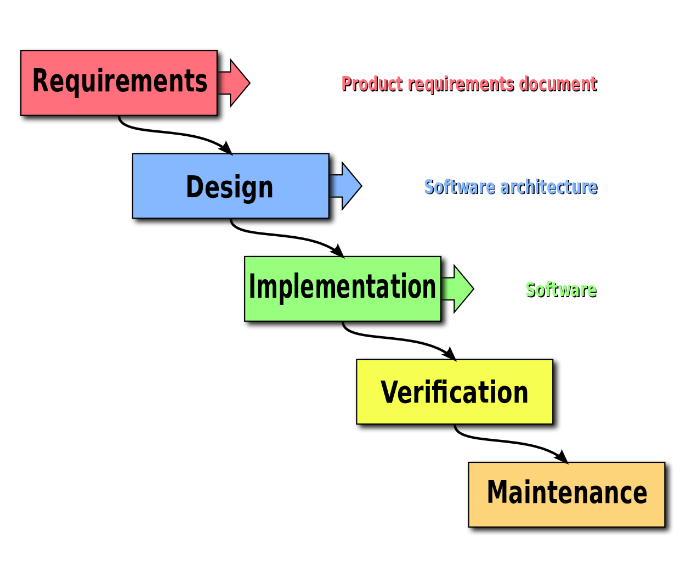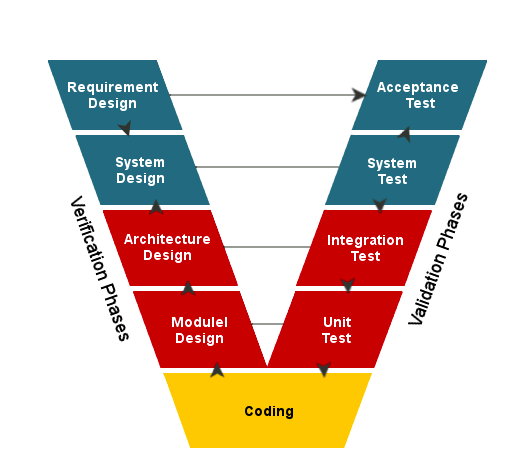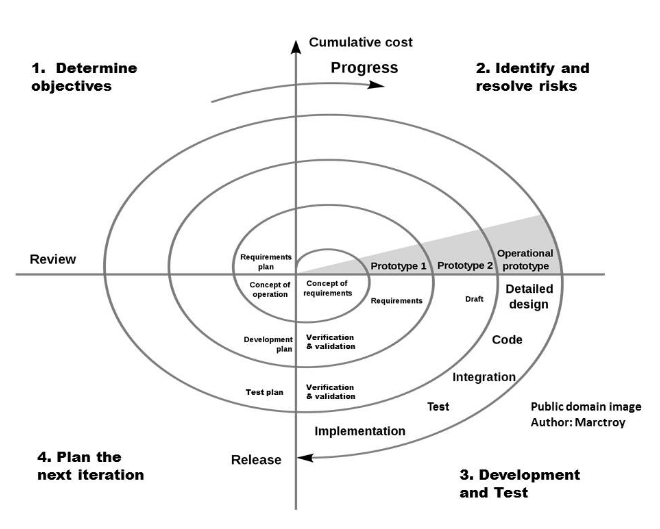
Open-Source Internship opportunity by OpenGenus for programmers. Apply now.
In this article, we have covered the basics of Software Development Lifecycles along with the different types like Waterfall Model. We have covered advantages and different stages of SDLC.
Table of content:
- What is a Software LifeCycle?
- How does SDLC work?
- Advantages of SDLC
- Stages of SDLC (Software Development Lifecycle)
- Types of SDLC
- Advantages of modern SDLC models compared to old ones
Let us get started.
What is a Software LifeCycle?
Software lifecycle refers to the methodology and all phases of a software product. It involves all levels of the software product including the planning, development , use case ,deployment and operations.
It involves standard defined methods and processes for creating high quality software. The complete stage of a product is broken apart into multiple steps and this helps developers understand how a product is created and implemented for a production ready use case.
How does SDLC work?
SDLC works by improving the quality and decreasing the production time of the product simultaneously lowering the cost required. A plan is followed which removes the general pitfalls and failures of typical software development projects.
The plan starts by noting down and listing the defects present in the existing system and then defining the requirements of the new system.
The plan consists of different stages of analysis, development,design, testing, planning and deployment. By estimating costly mistakes SLDC can eliminate repetative rework and after-the-fact fixes.
Advantages of SDLC
Advantages of Software Development Lifecycle (SDLC) are:
- These methods provide an efficient framework and strategy to develop software.
- It helps reduce unnecessary expenditure during software development.
- Developers can follow a systematic process to develop products that allows them to test the software before its release.
- It is helpful as the organisation is able to effectively plan before the actual development of the product.
- The models allow developers to effectively maintain the product and make changes to fix bugs or add features.
Stages of SDLC (Software Development Lifecycle)
1) Identifying current problems
This stage of the SDLC the team gets input from all stakeholders , customers , salespersons , developers and programmers. The current system is evaluated and its short-comings are identififed.
2) Feasibility study and Plan
This phase involves analyzing the feasibility of the plans and requirements made. Some of the areas considered are economic feasibility,Operational feasibility,Technical feasibility,Legal feasibility and Schedule feasibility.
The team then determines the resources and cost needed for implementing the requirements that have been analyzed. It also lists down the risks involved and notes down sub-plans for minimizing those risks.
3) Design
In this phase the SDLC starts by referring the software requirements and then designing an appropriate architecture for the software. All the designs developed are well documented and these documents are known as design document specification.
All stakeholders then review the design and offer their feedback and inputs for changes or improvements.This design provides a blueprint of the software being developed.
4) Development
At this stage development of the product begins. The software developers transform the design of the product to reality.The design document specification provides guidelines for the source code,features and targets required.
5) Testing
The software is then tested for all edge cases, defects and deficiencies. The product is not passed onto the next stage until all errors are fixed. It is ensured that the code meets the expectations that is required from it.
6) Depolyment
The software is then deployed to production environments so that users can start using the products. Different organisations follow different methods of deployments. Some organisations might first release it to a development environment and then deploy it to production if they feel satisfied or the product is made open to a small group of people initially and then opened to everyone.
7) Maintainence
In this phase developers fix issues that might come up after the product is live for customers.When the issue is fixed the product is tested again and once it is verified to be stable it is again deployed and released to the customers.
Types of SDLC
Types of SDLC are:
- WaterFall Model
- Iterative Model
- V Model
- Spiral Model
- Agile Model
Let us dive into each of the above types of SDLC.
WaterFall Model
This is the oldest model and cosists of straightforward steps. Each stage is dependent on earlier stage. The product is tested only after all the stages are completed and changes cannot be implemented before that. It is easy to implement this model , can be used for small projects and the phases are clearly.
The different stages of this model are
- Requirements
- Design Planning
- Implementation
- Integration and Testing
- Deployment
- Maitainence and Operations
Disadvantages
- It is not suitable for large complex projects.
- Very time consuming for scalable projects.

Iterative Model
In this model additional features are added in small iterative steps.The initial development is done in a small scale and each iteration consists of coding and testing of the product. Each new iteration has more features.
This model makes developers easy to measure their progress and it provides new features iteratively and improves risk management.
The stages of this model are
- Requirement gathering & analysis
- Designing
- Implementation
- Testing
- Deployment
- Review and Maintainence
Disadvantages
- This model cannot be used for large projects.
- It requires lot of attention from management and enhanced resources.

V Model
This is an extension of waterfall model. In this model the development and testing are organised in a parallel fashion.Each phase consists review processes and deliverables, which makes it easy to manage.It results in high discipline as phases are completed step by step.
The various stages of this model are
- Requirement Gathering stage
- Design Planning Stage
- Build Stage
- Testing Stage
- Deployment stage
- Maintenance stage
Disadvantages
- Difficult to change the product once it reaches the testing phase.

Spiral Model
This model is a combination of iterative and waterfall model.It pays more attention to the risk factor of the product.The spiral model goes through the planning, design, build and test phases over and over, improving upon them at each pass. This allows the software to be released in an incremental through iterations. Compared to the other models mentioned above it becomes easier to introduce changes and accurate documentation of requirements are made.
The stages present in this model are
- Objectives determination and identify alternative solutions
- Identify the risks and resolve them
- Develop next version of the Product
- Review the product
- Plan for the next Phase
Disadvantages
- The management of the model is complex however.
- The completion time is uncertain.

Agile Model
The agile model seperates the product into cycles and delivers them very quickly.It is more focused on adaptability and customer satisfaction.This model produces software in short cycles in a succession of releases. The model provides the freedom to add fearture and adjust changes quite easily in any stage. With each iteration the product is shown to customers and stakeholders. The final product must meet all specifications of the customer.
The different stages of this model are
- Concept phase
- Inception phase
- Iteration phase
- Release phase
- Maintenance phase
- Retirement phase
Disadvantages
- There is no defined end phase of this model.
- Since agile model delivers the software in increments it is difficult to track progress.

Advantages of modern SDLC models compared to old ones
The modern SDLC models focus more on the final requirements of the stakeholders and customers. The old models focused more on the process, they were sequential models which went from requirement analysis, design, implementation, testing, and production to maintenance. The modern models provide clear insights , analysis , adaptabilty and agility.
In the modern time where technology is developing so rapidly and competition is so intense software has to developed and deployed to production rapidly . Design , Development and Testing and deployment of new releases has to be rapid with minimum errors and risks of failures and the modern SDLC models provide methods to perform small incremental releases of such software whereas the old models changes were harder to implement.
The modern models reduces the re work needed later on for the product and customers have an early say in the product so developers have an early review of the product and can make changes accordingly.
With this article at OpenGenus, you must have a complete idea of Software Development Lifecycles. Enjoy.
